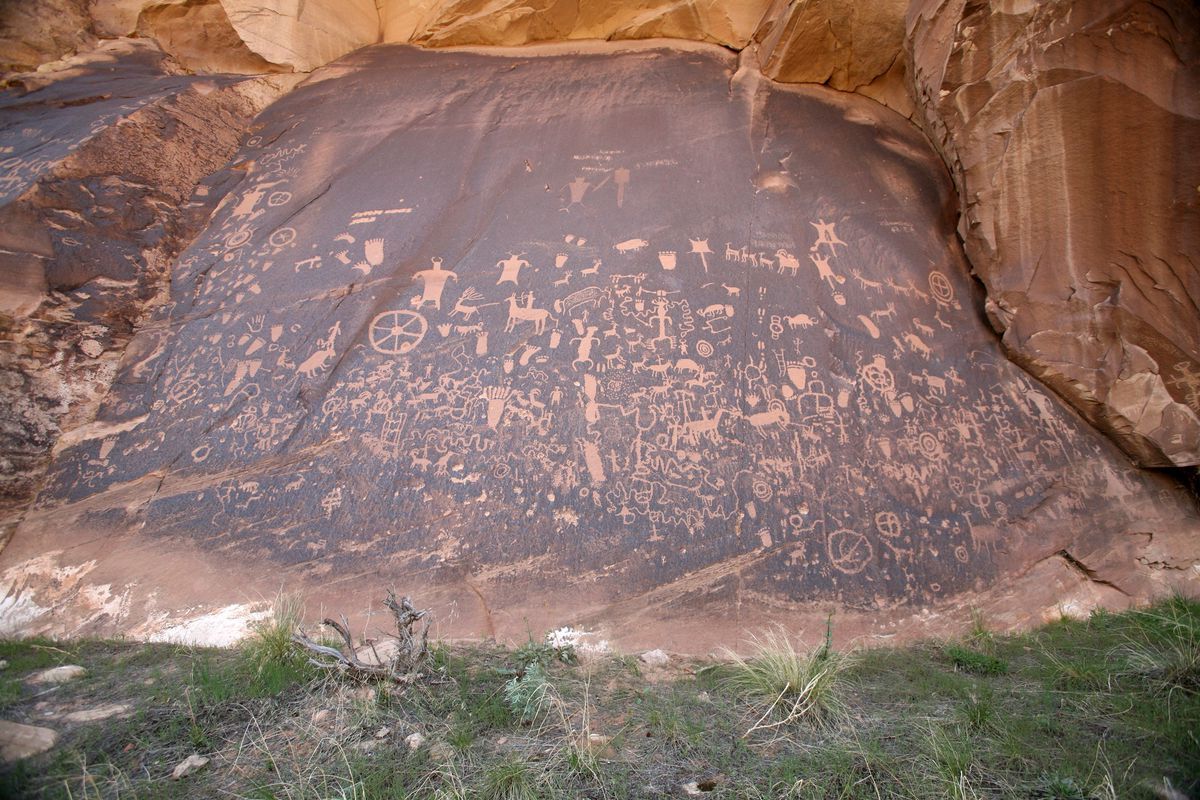Secrets Of Utah’s Newspaper Rock Art

Have you ever wondered about the mysteries of Utah's Newspaper Rock? This incredible site, located in the heart of the state, features one of the largest collections of petroglyphs in the United States. These ancient carvings, etched into sandstone, tell stories from over 2,000 years ago. They offer a glimpse into the lives of Native American cultures that once thrived in the region. Whether you're a history buff, an art lover, or just curious, Newspaper Rock is a must-see. Join us as we explore the fascinating history, meanings, and significance behind these timeless rock carvings.
Discovering the Secrets of Utah's Newspaper Rock Art
Utah's Newspaper Rock Art is a fascinating window into the past. This ancient rock panel, located in the heart of the state, is covered with hundreds of petroglyphs. These carvings tell stories of the people who lived here long ago. Let's explore some of the most intriguing aspects of this historical treasure.
The History Behind Newspaper Rock
Newspaper Rock has been a canvas for Native American artists for over 2,000 years. The petroglyphs were created by various cultures, including the Anasazi, Fremont, Navajo, and Pueblo peoples. Each group left its mark, contributing to the rich tapestry of images that we see today.
Anasazi Contributions: The Anasazi, also known as the Ancestral Puebloans, were among the first to carve into the rock. Their images often depict animals, human figures, and abstract symbols.
Fremont Culture: The Fremont people added their own unique style to the rock. Their petroglyphs include trapezoidal human figures, intricate patterns, and hunting scenes.
Navajo Influence: The Navajo, who arrived later, contributed symbols and images that reflect their spiritual beliefs and daily life.
Pueblo People: The Pueblo people, descendants of the Anasazi, continued the tradition of rock art, adding their own symbols and stories to the panel.
Interpreting the Symbols
The petroglyphs on Newspaper Rock are more than just pictures; they are messages from the past. Interpreting these symbols can be challenging, but researchers have made significant progress in understanding their meanings.
Animal Depictions: Many of the carvings feature animals such as deer, bighorn sheep, and birds. These images likely represent hunting scenes or spiritual totems.
Human Figures: Human figures are common on Newspaper Rock. Some are simple stick figures, while others are more detailed, showing clothing and headdresses.
Abstract Symbols: Abstract symbols, such as spirals, circles, and zigzags, are also prevalent. These may represent natural phenomena, spiritual beliefs, or even maps.
Hunting Scenes: Scenes of hunters with bows and arrows chasing animals are frequent. These images provide insight into the daily lives and survival strategies of the ancient inhabitants.
The Cultural Significance
Newspaper Rock is not just an archaeological site; it is a cultural treasure that holds great significance for Native American communities. The petroglyphs are a link to their ancestors and a testament to their enduring presence in the region.
Spiritual Connection: For many Native American tribes, the rock art is a sacred connection to their ancestors and spiritual beliefs.
Historical Record: The petroglyphs serve as a historical record, preserving the stories and experiences of the people who lived in the area.
Educational Resource: Newspaper Rock is an invaluable resource for educating people about the rich cultural heritage of Native American tribes.
Visiting Newspaper Rock
If you're planning a trip to Utah, visiting Newspaper Rock should be on your list. The site is easily accessible and offers a unique glimpse into the past.
Location: Newspaper Rock is located in the Indian Creek Corridor of southeastern Utah, near the entrance to Canyonlands National Park.
Accessibility: The site is accessible by car, and a short walk from the parking area will take you to the rock panel.
Best Time to Visit: The best time to visit is during the spring or fall when the weather is mild and the lighting is ideal for viewing the petroglyphs.
Respecting the Site: When visiting, it's important to respect the site. Do not touch or deface the petroglyphs, as they are fragile and irreplaceable.
Preserving Newspaper Rock
Preserving Newspaper Rock for future generations is crucial. Efforts are being made to protect the site from natural and human threats.
Conservation Efforts: Conservationists are working to protect the rock from erosion, vandalism, and other threats.
Public Awareness: Raising public awareness about the importance of preserving Newspaper Rock is key to its protection.
Community Involvement: Involving local communities in preservation efforts helps ensure that the site remains protected and respected.
Newspaper Rock is a remarkable testament to the creativity and resilience of the people who lived in Utah long ago. By understanding and preserving this site, we honor their legacy and ensure that their stories continue to be told.
The Lasting Impact of Newspaper Rock
Newspaper Rock in Utah offers a unique glimpse into ancient cultures. The petroglyphs carved into the rock tell stories of people who lived thousands of years ago. This site is not just a collection of old carvings; it's a historical treasure that helps us understand the past.
Visiting Newspaper Rock is like stepping back in time. You can see the creativity and communication methods of early inhabitants. The rock art is well-preserved, making it a must-see for history buffs and curious travelers alike.
Respecting and preserving this site is crucial. It allows future generations to learn and appreciate the rich history it holds. Next time you're in Utah, make sure to visit Newspaper Rock. It's a fascinating experience that connects you to the ancient world in a way few other places can.

